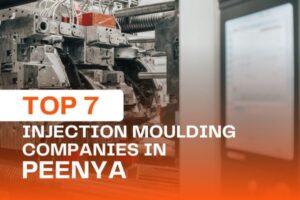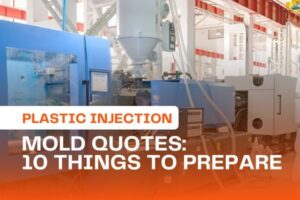3 Plate Mold
Introduction
Injection molding, a staple in the manufacturing industry, provides a plethora of techniques and tools for producing parts that meet a broad spectrum of requirements. Among these tools, the 3-plate mold stands distinct due to its unique construction and features. Comprising three distinct plates – the moving plate (A plate), the floating plate (B plate), and the fixed plate (C plate) – the 3-plate mold brings several advantages to the table, along with some notable drawbacks. Here we dive into these aspects and identify the ideal use cases for this versatile tool.
Advantages of 3 Plate Mold
Greater Design Flexibility: With its additional components, this mold type offers unparalleled flexibility. It can accommodate multiple cavities and supports various gate locations, enabling the production of parts with complex shapes and sizes. This versatility often makes it the go-to choice for intricate design requirements that simpler molds can’t handle.
Automatic Degating: One standout feature is its ability to automatically separate parts from the runner system during the molding process. This capability significantly boosts efficiency by minimizing manual labor and improving output consistency.
Increased Precision: The mold’s sophisticated design allows for enhanced accuracy in the final parts. This level of precision proves particularly beneficial for applications that demand minimal tolerances and high quality.
Disadvantages of 3 Plate Mold
Higher Costs: The advanced design and increased complexity drive up production and tooling expenses. These higher costs can be a barrier for smaller projects or those with tight budgets.
Longer Cycle Times: Due to the additional steps involved, this mold type generally has longer cycle times. While not an issue for every project, it can affect throughput in high-volume production.
Increased Maintenance: Its complexity demands more frequent maintenance and operator expertise. This can result in higher long-term costs and additional training requirements.
Ideal Use Cases of 3 Plate Mold
Complex Part Design: This mold is ideal for intricate parts, including those with multiple cavities or unique geometries. Its flexible configuration helps manufacturers meet diverse and challenging design needs.
Automatic Degating Requirement: For projects requiring reduced manual labor and consistent output—especially at scale—this mold offers a clear advantage through built-in degating functionality.
High Precision Requirements: When accuracy is critical, such as in aerospace, medical, or precision engineering applications, this molding approach delivers the reliability needed to meet tight specifications.
Conclusion
In the world of injection molding, this mold type stands out for its versatility, automatic degating, and ability to produce high-precision parts. However, its complexity brings higher costs, longer cycle times, and increased maintenance. Manufacturers should weigh these factors against project requirements to determine if it’s the right fit. By understanding its strengths and limitations, companies can make informed decisions and optimize their production processes.




